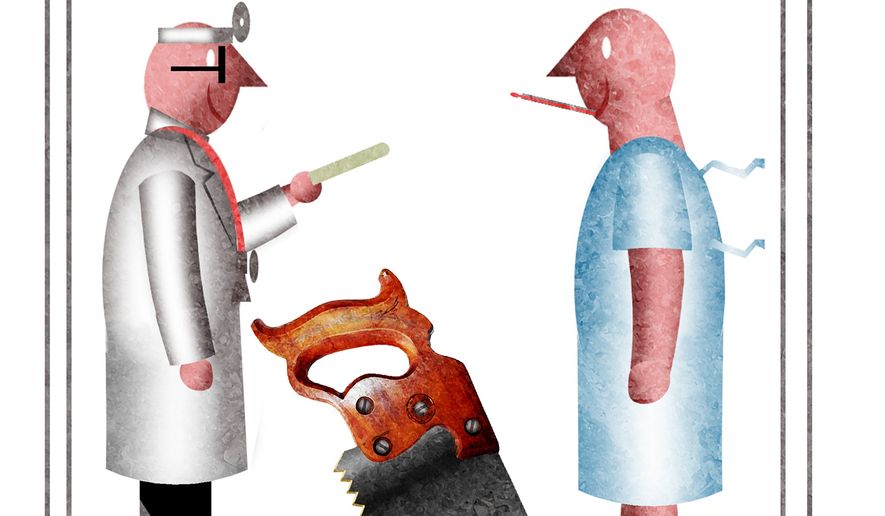OPINION:
At the beginning of 2024, the Centers for Medicare & Medicaid Services will cut payments to physicians by 3.4% for services rendered to Medicare patients. This disastrous action will cripple independent physicians and rural health care providers across the country. Rising costs and shrinking reimbursement rates threaten Medicare beneficiaries’ access to health care, exacerbate vertical consolidation, and drive patients toward higher-cost sites of service.
As the only coalition of physicians in Congress, the GOP Doctors Caucus is working to increase access to affordable and high-quality health care. It is our goal to navigate the ever-increasing challenges facing those who try to provide care for Medicare recipients.
Therefore, we are greatly troubled by yet another round of payment cuts to the Medicare Physician Fee Schedule set by CMS.
Physicians take care of Medicare patients because of the need, not because it makes financial sense. But this altruism does not pay the bills or staff salaries. Physicians cannot weather the continuous barrage of payment cuts, especially in the face of record inflation and exploding bureaucracy.
With the constant financial undercutting and ever-increasing regulatory burden, physicians are increasingly hanging up their stethoscopes and retiring.
On Jan. 1, an across-the-board cut to the physician fee schedule will go into effect because of a rule proposed by the Department of Health and Human Services earlier this year. In short, this cut comes at a steep cost for specialists, such as oncologists, cardiologists and surgeons, who serve rural areas where residents are overwhelmingly Medicare-eligible.
In anticipation of the establishment and enactment of this rule, the Doctors Caucus introduced legislation seeking to reform the physician fee schedule, prevent extreme fluctuations in future reimbursement, and update how costs are determined. This would be accomplished in large part by changing the threshold of current budget neutrality rules to reflect the increase in the medical practice cost inflation since the threshold was last updated.
Together, these provisions are fiscally sound, targeted solutions that provide certainty and stability to a system that has long been neglected.
The coming physician fee cut is a devastating symptom of a larger ailment afflicting CMS. The agency is in desperate need of modernization. The current system, which lists the services physicians can bill to Medicare, the costs associated with that care, and the annual projection of the sum of all billed care, is modeled on data from when it was established the Omnibus Budget Reconciliation Act of 1989. Simply put, many of the metrics we rely on are nearly 35 years old.
In the United States, because of an aging workforce and widespread burnout, we face a critical physician shortage. Outside major metropolitan areas, the severity of this issue is intensified by rural-to-urban migration. For many new graduates, economic prospects are better in areas where patients are more likely to be privately insured.
While some of the shortages can be remedied by advances in telemedicine, a meaningful doctor-patient relationship is rooted in and nurtured through in-person care. We need to fix our broken physician payment structure to reverse the damaging and disturbing trend of physicians leaving their practices, causing health care to disappear for tens of millions of Americans.
As physicians, we cannot stand by and allow that to happen.
• Greg Murphy is a urologist representing North Carolina’s 3rd Congressional District in the House of Representatives since 2019. Brad Wenstrup is an Army Reserve officer and doctor of podiatric medicine who has represented Ohio’s 2nd Congressional District since 2013. Michael Burgess is a physician representing Texas’ 26th Congressional District.




Please read our comment policy before commenting.